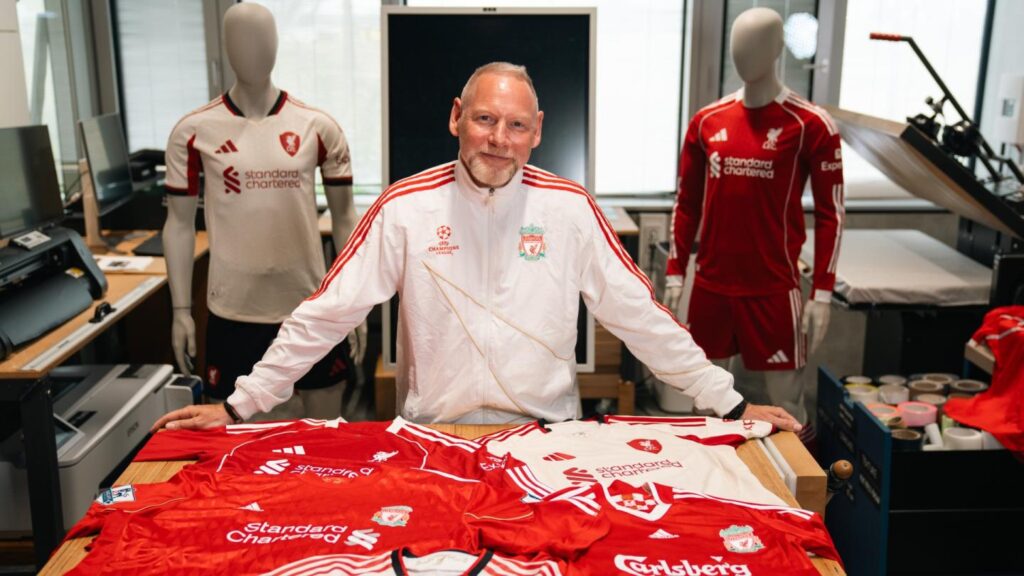He explains: “Being a Liverpool fan and then having the privilege to do it, back then it was super-exciting. There was a call, ‘Hey Jürgen, we need to talk – there’s a new club coming.’ ‘OK, which club is it?’ Then they said, ‘It’s Liverpool.’
“That was amazing – and a lot of pressure as well at the same time! Definitely the 2006 jersey, the home one, is my favourite.”
With the meticulous process required for producing a shirt, Rank and his team normally work two years in advance, under a cloak of secrecy. That means 2026-27’s work has been signed off and they’ll now be focusing on 2027-28.
It starts with a concept check to ensure alignment with the club and the story they want to tell. They move on to initial sketches. A first sample is produced from those outlines and then more feedback provided – this stage is repeated twice before eventually moving towards finalisation.
“It’s a lot of work,” Rank says. “It needs a lot of people. Design is just one part in it. So you have the sports marketing people, you have the product marketing and development people, you have the people on the ground – and everyone gives input.
“In the end, it’s a designer’s job to bring those ideas alive and to translate all the ideas into, hopefully, a beautiful football shirt.
“It’s very important that you know, ‘What is the club? What is the club vision? What does the club stand for?’
“You know there are clubs which are just looking into the future and want to develop or innovate them into a new direction and don’t want to be associated with the past. Then you have clubs which are really proud of the history.
“You just need to figure out what is the vision of the club and what are the values of the club, and you need to make those values visible on the jersey.”
Now Liverpool are back in the adidas family, subtle links to the 2006-08 kit are in this season’s home edition, while there is a special story behind the crest on the away strip.
The badge that appears on the cream-coloured shirt was originally created for the 2012-13 campaign, but consigned to the recycle bin after the association came to an end.
However, Rank, who had drawn inspiration for it while walking through the Anfield museum, held onto the designs – unsure if they would ever see the light of day.

